Our plant doctors Radko Tichavshy, Mark Moodie and Pawan Singhania weigh in on your plant problems.
Radko TIchavsky Mark Moodie Pawan Singhania
Radko Tichavsky is a Czech born Mexican Agrohomeopath. He is the former director of Instituto Comenius at Mexico, author of Handbook of Agrohomeopathy, 2007 (Spanish) and Homepathy for Plants, 2009 (Spanish) and creator and teacher of Holohomeopathy. http://icomenius.edu.mx/index1034.php?lang=esp El 04/12/2014, a las 15:36, Radko Tichavsky [email protected]
Mark Moodie hosts the website Considera which provides a growing M.M and Repertory for plants and discusses resources for biodynamics and Agrohomeopathy The website allows the world community to contribute their experiences in planting.
Dear Plant Doctors,
We live in the Northeastern U.S. where the winters are cold and the summers hot. There is quite a lot of rainfall in this area. One of our trees gradually lost bark at the base of the tree until the tree died. Now another tree is losing bark. It just falls off (see pictures). Both trees have a light green discoloration on the bark. I don’t know if that is the reason for the loss of bark, or just coincidental. Can you suggest possible reasons for loss of bark and what to do about it?
Bark gone at base of tree. This tree died. Bark coming off of young tree
Thank you
Janice Zalewski
Radko Tichavsky:
Hi Janice. The problem of your trees is mainly due to the effect of acid rain, acidic soils reduces populations of microorganisms which suppress pathogenic funghi, and they are attacking in this case your trees. You can collect a little of the green and yellow lichen that appear on the trunks of the trees in your photo, scrap it lightly with a knife and make the mother tincture in ethylalcohol 30%, and after a week, potencialize the remedy to the 30 CH and apply sprayed on the trunks and around trees in a circle 3 m in diameter. Additionally you can apply Phosphorus 6 CH, Alumina 30 CH, Cuprum metallicum 12 CH or 12 CH Zinc metallicum (do not mix the last two remedies) in trees and soil. It is important to ensure good drainage of the soil and provide abundant organic matter and compost around trees to balance the pH of the soil.
Dear Plant Doctors
Our Rasberry and tomato plants developed Rust last year. I am told it is a kind of fungus. Is there a way to treat or prevent it?
Thank you
Cynthia McCall
Radko Tichavsky:
Hi Cynthia. The funghi of Uredinales family, have been a problem mainly due to the establishment of monocultures. In raspberry you can apply Citrus 6 CH (the constitutional remedy Rasberry). The remedy should be prepared from shell pericarp of the fruit, and leaf in one bottle. The main remedy for these symptoms in rasberry is Cymbopogon citratus 6 CH and the complementary remedy Camellia sinensis 6 CH. In tomato you can use Zingiber officinalis 12 CH, Camellia sinensis 6 CH, Cocos nucifera 6 CH, Anacardium 12 CH. In both crops if you apply homeopathy during the rainy season, add as an adjuvant to homeopathy remedies olive vegetable oil, or nopal (Opuntia ficus-indica) slime. As well as prevention and corrective treatment you can use Ganoderma applanatum 6 CH, Ganoderma lucid 6 CH, Piptoporus betulinus 6 CH among others. It is always important to make a detailed repertorisation, not only of the plant but also of the entire holon (including the soil of course) to determine the simillimum. It is important to plant complementary or company plants: with tomato alternate basil and in the case of the raspberry plant, alternate it with Cymbopogon citratus in the form of live walls.
Hi Plant Doctors,
Scale insects have infested the trees on my lawn. They attach themselves and don’t seem to move, but feed on the trees. We are in Maryland which is a southern state in the U.S. with moderate temperature and rainfall. Can anything be done?
Hopefully,
Valentia Rogers
Radko Tichavsky:
Hello Valentia. The plague of scale insects is linked to imbalance of nitrogen in the soil and in plants. In the treatment you can use nosode of scale insects 6 CH. The remedy is made from insects. Select the most robust and vivid ones possible and place them in ethyl alcohol 30% (to make a MT). The remedy has to be sprayed not only on insects but also around trees affected, once every two weeks. The change will be seen gradually. Further, apply Nitric acid 30 CH, Carbo vegetabilis 6 CH and Sambucus nigra 6 CH (with olive oil as adjuvant). Certainly for a complete the repertorization one needs to know specifically the tree name and not only plague (in every kind of tree we will use a different treatment) and we always consider the vitality and biotypology of the entire holon.
Hello Plant Doctors,
I am from Ukraine. In my Garden is excess of shadow during the day, because in the morning the sun is hiding behind the house. It is big problem. In the Garden are growing Hosta and Iris (Iridaceae) now. Are there homeopathic preparations to help grow plants in shadow? Can you recommend plants that will flower with less light?
Thank you
Evgeniya
Radko Tichavsky:
Hi Evgenia. In the Hosta plant , you can apply Ricinus communis 6 CH. It contains shikimic acid, an important precursor of secondary metabolites in the plant, which facilitates the creation of photosensitizers and photomodulators.
Hosta is really an interesting plant, because it can access two different biochemistry pathways (C3 and C4), depending on lighting and water conditions. In this case you can apply Ricinus remedy and thoroughly water the plant to access the pathway C3, less demanding of sunlight.
The Iris plant does not have this biochemistry pathways flexibility, so it will be difficult to adapt the plant to the conditions of low solar luminosity. Its constitutional remedy is Cymbopogon citrates. You can apply this constitutional remedy in 12 CH potency and also spray with Phosphorus 200 CH weekly. There are many plants with little requirement of the sun, for example: Convallaria majalis, Galium odoratum, Geranium phaeum, Epimedium spp, Impatiens spp, Astilbe spp.,or orquideas.
Pawan Singhania: Evgeniya, there is no substitute to sun, except that sometimes growers use more of potassium and reduce nitrogen input, but this is not possible for you. In Biodynamic agriculture, we use BD 501 to enhance photosynthesis, but again, simply using one of the 8 BD preparations is not the solution. You have to be content by growing shade loving plants and need to find out locally if there are any flowering species that grows there. There are a limited variety of flowering species that grow under shady conditions. You can however try to grow spathyphylum, anthuriums, some lily varieties.




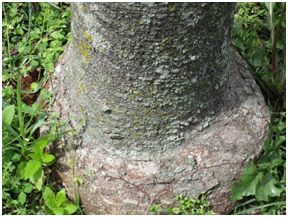
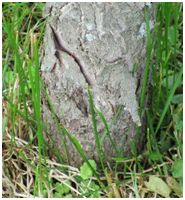
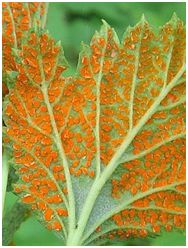
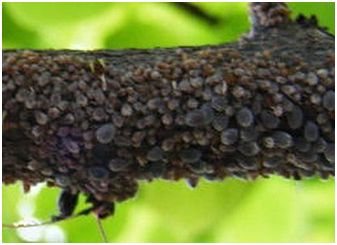

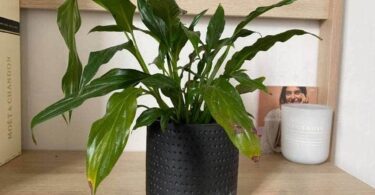
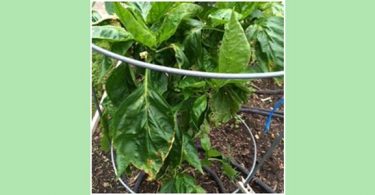

For Janice: The colour light green is a main-symptom for Phosphorus…. Put once three globules (pills) Phosphorus M on the soil near the tree. Phosphorus is as like as Sulphur a polychrest and starts the healing process. I had already some amazing healing effects with Phos., but you have to take the high potency M.
For Cynthia: Take for each plant Ferrum metallicum (Rust!!) LM12, 2 pills direct on the soil, twice with an interval of two weeks.
For Valentia: What a nice symptom……. take Manganum metallicum LM15, twice with an interval of 19 days, 3 pills at each date. It is funny, I take manganese nodules as hom. remedy at the moment…. You find these black nodules at the ground of the see and look like your black insects….
Hallo, Evgeniya, I know your case. My suggestion was Sol M and Aurum M, 2 pills for each remedy. Sol twice, interval of 3 weeks; and Aurum 12 days after the first Sol medication. You didn’t get my comment the last time?
Perhaps I have enough energy for the second site later….
@ Mark Moodie: Do you have results about the soil? My homeopath and me push us each other to new spheres (in the meantime we treat us one another)! We play with remedies and high potencies. Homeopathy is amazing! I modify the colour of a plant with the remedy Elephant. It works.
I send you the best regards from Germany
I’m happy with this Website! Congratulaciones and thank you ! Respect for all of you !
Another excellent column! Radko Tichavsky is a genius by any standard. His understanding of this subject is deeper than anyone I’ve read before. Thank you.
I HAVE A QUERY. HOW COULD I POST HERE ?